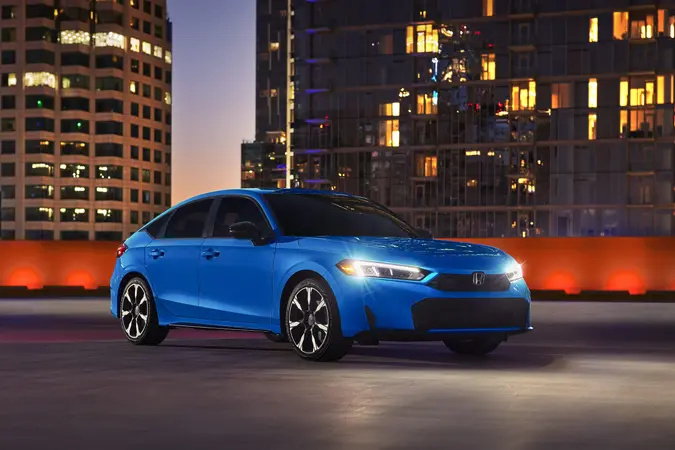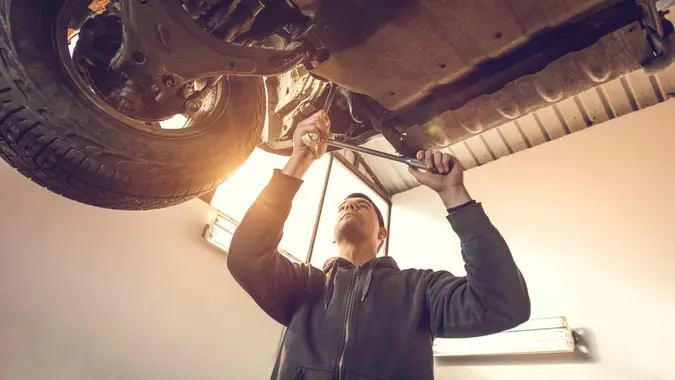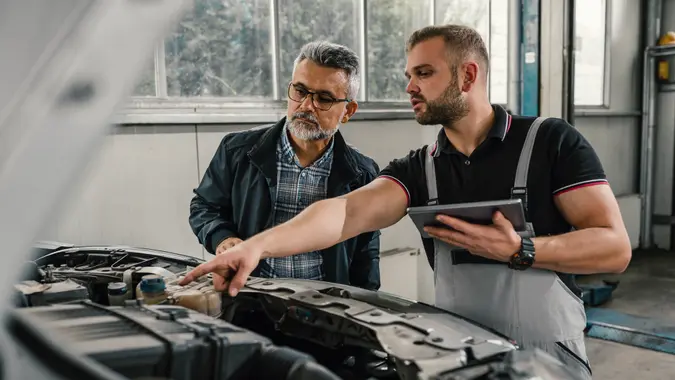2 Reasons New Car Prices Will Crash in 2025

Commitment to Our Readers
GOBankingRates' editorial team is committed to bringing you unbiased reviews and information. We use data-driven methodologies to evaluate financial products and services - our reviews and ratings are not influenced by advertisers. You can read more about our editorial guidelines and our products and services review methodology.

20 Years
Helping You Live Richer

Reviewed
by Experts

Trusted by
Millions of Readers
After facing years of precipitous price inflation in the wake of the COVID-19 pandemic — and the supply chain issues and chip shortages that ensued — it appears that new car prices have reached a relative plateau, and may even begin to fall.
The market for new cars is finally starting to turn in favor of individual buyers — at least, according to CarEdge.
Is an Actual New Car Price Crash Coming in 2025?
CarEdge CEO Zach Shefska recently took to YouTube to explain why new car prices could end up crashing next year. “Car prices are going to crash in 2025,” Shefska said. “Dealers are starting to discount heavily and manufacturers are picking up their incentives.”
“And so far in 2024, we’ve seen a specific focus on new car prices com[ing] down significantly, and our expectation is that trend will continue in 2025,” he added.
A November Kelley Blue Book (KBB) analysis was a bit more measured, not quite going so far as to call the new paradigm surrounding new car prices a “crash,” while gesturing towards a stickier MSRP.
“Overall, average transaction prices remain about $10,000 higher than five years ago, before the COVID-19 pandemic. At that time, average transaction prices for new vehicles were $38,259,” KBB’s Renee Valdes wrote, underscoring the price gulf that had emerged between 2019’s prices and those closing out 2024.
That’s a lot of ground to reclaim, though. Will new car prices actually drop in 2025? Two reasons they could are presented below.
Inventory Concerns and Consumer Pushback Could Drive Heavy Incentives
As KBB outlined, data from October indicated current U.S. inventory of new cars topped 3 million vehicles — the first time that’s happened since the pandemic began. Further, citing Cox data, KBB indicated inventory levels currently represented 84 days of supply. That’s also the highest figure seen since 2019.
With inventory sitting unsold on lots and consumer resistance to sky-high MSRPs in evidence, as CarEdge suggested, discounts and incentives could be on the horizon.
“These discounts and incentives will be the key to lowering prices, as manufacturers find themselves under pressure to respond to both and economic shifts, CarEdge stated. “It would be a welcome surprise if more than a few official MSRPs are lowered, but we don’t expect to see that. Automakers are more keen to increase incentives rather than lowering MSRPs for all.”
Rate Cuts Could Mean Better Financing Deals on New Cars
While the two consecutive rate cuts since September have softened the market somewhat, Reuters reported economists and analysts expected a further 25 basis point rate cut on Dec. 18, which eventually came to pass. In accordance, this could mean even better deals for car buyers in early 2025, as rate cuts tend to take time to trickle down meaningfully to consumers.
Cox Automotive chief economist Jonathan Smoke reiterated this prediction in a statement cited by KBB. “I expect the best time for lower rates will be by the spring,” Smoke said. “[Buyers] could see 1-1.5 points of further improvement, more on used vehicles,” he added.
CarEdge pointed to captive lenders (or lenders which are directly tied to automakers) as being behind the increasing amount of 0% financing offers hitting showrooms.
Overall, Shefska predicted a drop of between 3%-5% in new car prices by the end of new year — and even if MSRP remains difficult to force lower, greater incentive programs to offset this should emerge, according to his analysis.
 Written by
Written by  Edited by
Edited by 

























